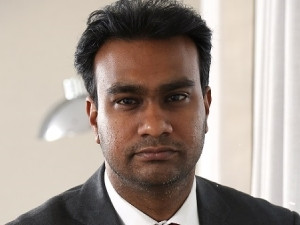
Ever since the deadly Spanish Flu outbreak of 1918, which resulted in the deaths of over 50 million people worldwide, medical researchers have feared the outbreak of another global pandemic. Recent outbreaks of deadly diseases, such as Ebola and Zika, have hit the headlines amid fears that these sicknesses may spread extremely rapidly in this era of global travel.
In the past, monitoring and controlling outbreaks of potentially contagious diseases was a slow process, as it was reliant on information from the ground, which then had to be manually captured and analysed. Not only is this costly, it is so time-consuming that by the time relevant data is available, the illness may have spread beyond control.
However, explains Aneshan Ramaloo, Senior Business Solutions Manager at SAS, the answer to this challenge is the effective use of big data and analytics.
"Almost everyone in the world today has a mobile phone, even in the poorest areas of the developing world. These can be a rich source of data for entities like the World Health Organisation (WHO), particularly in those regions where other sources are sorely lacking," he says.
"Moreover, tracking and analysing mobile phone mast activity will enable authorities to track where calls to helplines are mostly coming from. As an example, a spike in calls from one particular area, including certain keywords relating to a specific topic, could be a good indicator of an outbreak, alerting authorities to direct more resources there."
Of course, continues Ramaloo, there is a lot more data available than that associated with mobile phones that can be used for the purpose of disease control.
"It is possible to collate and cross-reference cross-border information, data from healthcare workers and hospitals, social media, transportation data (flight, port and train, road as well as number plates). This can not only point to areas where potential outbreaks have occurred, but can also indicate where people are and how fast they are moving - critical information if authorities are trying to reduce the chance of a localised outbreak becoming a pandemic.
"Performing real-time advanced analytics on all of this information will enable authorities to provide quicker, more effective responses to areas where an outbreak has occurred. This is not only in the form of containment, but also how best to distribute resources to treat the disease," he adds. Analytics can play an important role in optimising the best place to site treatment centres.
"Such analytics can also be effective anywhere in the world, as there will always be sources of data that can be utilised, from mobile phones to tweets to Facebook posts. While the volume of data may vary, with the right technology - backed by the relevant skills of data scientists - it becomes much easier to determine answers like where did a particular disease arise, where it is likely going to spread to, what are the symptoms and how can it be contained and treated.
"With a multitude of data points, data scientists can, in fact, develop predictive and forecasting models that play an important role in disease management. And the more we know beforehand, the less likely mankind will have to fear another world-threatening pandemic like the Spanish Flu," concludes Ramaloo.
Share